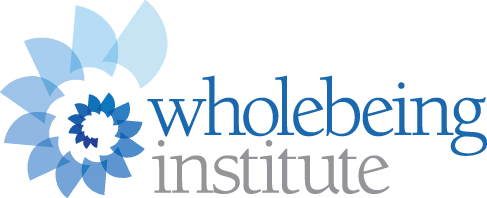by Nicole Stottlemyer
Hope is a rock star in positive psychology. It’s one of the 10 big positive emotions, one of the 24 VIA strengths, and the second letter in the CHANGE model that we teach in our Positive Psychology Coaching courses. That’s a lot of hope!
But how exactly do we help people feel hope and, while we’re at it, how exactly do we help people feel other positive emotions, like amusement, awe, gratitude, inspiration, interest, joy, love, pride, and serenity?
This is a question we’ve been asked before in our coaching courses, and I decided that it’s high time for me to craft an answer that I can share with others. As you read this, I invite you to take what helps, make additions, ask questions, and always know that I’m here and happy to work with you or talk things through.
Also—this is my disclaimer!—remember that positive psychology is not happy-ology. We do not advocate ignoring painful emotions, or faking a smile for the sake of appearing happy. Now that that’s out of the way …
Positive emotions are so darn awesome because they can engage our prefrontal cortex. If we are stuck in the amygdala response (fight, flight, freeze) we can’t think clearly, and our prefrontal cortex helps us do that. The theory, however, says that positive emotions do much more than make us feel good in the moment. When we experience them consistently, it helps build our resources over time—physically, intellectually, and socially. In other words, you’re more effective and resilient. In other, other words, there are short-term and long-term benefits to experiencing positive emotions, and as a result they are super-useful in doing our job as Positive Psychology Coaches.
Implicit vs. Explicit
As a Positive Psychology Coach, I use strengths and positive emotions a lot. When I use strengths, it is often explicit, but when I use positive emotions, it is often implicit. For example, I talk to clients about what strengths are, what their benefits are, I have them take the strengths assessment, I ask them about strength stories, I strength-spot them, etc. They end up learning about strengths, so I call this explicit.
With positive emotions, however, I don’t usually teach them in the same way. I might tell them about Barbara Fredrickson’s Broaden and Build theory and the benefits of paying attention to the micro-moments of positivity, and explain negative bias. But there’s also an implicit way to teach and use positive emotions.
You can elicit positive emotions by asking good coaching questions or by simply role-modeling those emotions. You don’t have to explain what you’re doing in order for clients to experience the benefits. For example, the question “How are you?” will likely yield a different response than “What went well today?” The latter has a greater potential to elicit a positive emotion than the former. (When I teach my niece and nephew about positive emotions, we talk about gratitude and each name three things that we’re grateful for. I love this because when we have sleepovers, it helps us remember the good parts of the day before falling asleep.)
Let’s play a little game. (I love to play positive psychology games!) Below is a list of good coaching questions. Read the questions and imagine the answers a client might give, or the answers you gave if you’ve been coached. Then list the positive emotions you feel. There are many positive emotions of course, but let’s focus on Barbara Fredrickson’s big 10, which are Amusement, Awe, Gratitude, Hope, Inspiration, Interest, Joy, Love, Pride, and Serenity.
● Would you tell me about the progress you’ve already made towards this goal? How have you done it? What strengths have you used? What obstacles have you overcome?
● Would you tell me about a time when you successfully did something like what you’re trying to do now?
● How have you used your strengths to pursue goals (or navigate transitions, or overcome challenges) in the past? How could you use your strengths to help you pursue this goal? How could you use your strengths in new ways to pursue this goal? What strengths would you like to further develop as you pursue this goal? How?
● Can you think of some times when you don’t experience this problem, or when it’s less of a problem than usual? What’s different about those times? What can we learn from those times? What would it take to make some of those conditions more common in your life?
You may have discovered that the beauty of these questions is that they can potentially elicit all 10 of the positive emotions, and that’s how they bring the client the energy to move forward with their goal. Positive emotions are part of the fuel in their tank!
But it isn’t always sunshine and roses. For instance, sometimes the best coaching questions are the hardest ones to answer, and can bring up not-so-pleasant feelings. I remember a time when I confidently whipped out what I thought was a perfect question and my client’s response was a total curveball. This can cause a coach to panic, which I did. Here’s what happened:
The client was talking about her relationship with her husband being a problem, and I thought it was a good moment to whip out my Appreciative Inquiry questions. I asked, “Can you think of a time when this isn’t a problem?”
She quickly said “No,” which immediately made me panic. And, to make matters worse, she looked mad! Somehow I composed myself, allowed a little silence, and then asked her again (pushing gently) by saying, “You’ve been married, what, 40 years now? (allowing more pause) … In all those years you’ve been married …”
“Oh, yes,” she said, remembering a time when their marriage wasn’t awful. And then we went on to have a great session. From that point, she was able to shift from feeling a lot of negative emotions about her relationship to feeling many positive emotions, including hope that things could be better again.
So, positive emotions can be felt as a result of asking Appreciative Inquiry questions, but these questions can be really hard to answer, so don’t panic if they don’t work instantly. People aren’t used to being asked this kind of question, but that’s part of the magic (and value) of hiring a coach!
Role-Modeling Positive Emotions
Asking good questions is one way to use the implicit approach. Another way is by being a role model. Here are three examples of role-modeling in order to elicit positive emotions.
Celebrate (Capitalize)
The client is talking about struggles. Then she mentions, almost as a throwaway comment, that she made it to work on time every day this week (which is one of her goals). I might seize that moment, interrupt her, and enthusiastically high-five her. This forces her out of her negativity spiral and allows her to feel the positive emotions of pride, joy, and hope. (Of course there are some instances where interrupting would not be appropriate, but you get the idea.) Help the client claim these micro-moments of positivity by celebrating small wins like this. Some people call this capitalizing, meaning instead of “I did this thing,” make it a big deal, celebrate, and help the client take pride: “I DID THIS THING.”
Active Constructive Responding
This positive psychology concept comes from the work of Shelly Gable and others. Active Constructive Responding (ACR) is a fancy way of saying that, when someone shares good news with you, you respond in an encouraging, positive way. It seems like common sense, but as Voltaire said, sometimes “common sense is not so common.” For example, if someone (a child, client, partner, etc.) tells you good news, such as “Hey, guess what? I passed my spelling quiz today” or “My boss agreed to the flexible schedule we worked on last week,” you respond with genuine interest and joy. By doing that, you help them re-experience the positive emotions related to passing the quiz or getting to spend more time at home. For more on ACR, watch this video with Tal Ben-Shahar.
Start Off High
I had a strengths coach, Jane Anderson, who would begin every session with great enthusiasm. The energy she brought to those first few moments made me feel like I was the best part of her day. Even when I was in a cruddy mood, within moments of hearing her voice, I was uplifted. And when we got down to talking about the issue that had me in a cruddy mood, I was able to shift it more easily. The presence you bring matters. You can role-model positive emotions in this way, or by starting a coaching call with a check-in question, like “What went well since we last met?” (Hopefully it goes without saying that you also want to be authentic.)
In summary, positive emotions rock, and coaches can use different methods to help clients feel them. They can teach (the Explicit Way), they can ask great questions (the Implicit Way), or they can role-model by doing things such as capitalizing (celebrating), Active Constructive Responding, or coming into a session with energy.
In the words of Maya Angelou, “People may not remember exactly what you did, or what you said, but they will always remember how you made them feel.”
Find out about WBI’s Positive Psychology Coaching Certification program.
Nicole Stottlemyer is a coach, facilitator, and senior teaching assistant with Wholebeing Institute. She holds Wholebeing certificates in Positive Psychology and Positive Psychology Coaching and the WBI award for Community Connector. Nicole facilitates virtual and in-person positive psychology meet-ups and loves collaborating. To contact her, email nicoletalks.com



